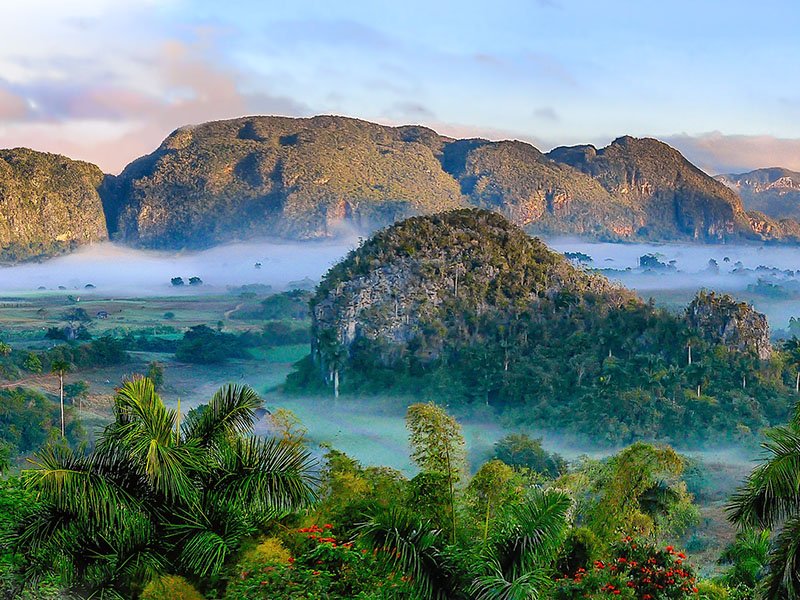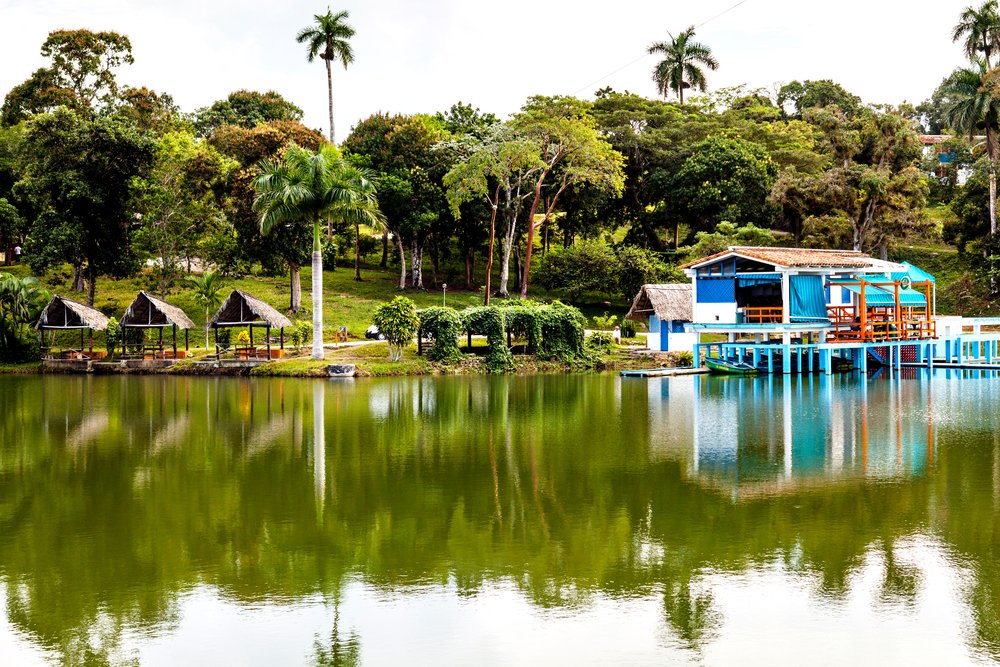Sure, the hustle and bustle of Havana can be exciting, but don’t spend all your time here! Here are 4 charming small towns in Cuba well worth exploring!
A day trip can be fun to get away from the big smoke and explore parts of a country that are arguably more authentic. You can get some much-needed rest and relaxation as well. All without having to deal with the often confronting nature of being a foreign visitor in a big city.
Some small towns in Cuba are so stunning it makes you wonder. Is the whole thing is in fact an act put on for tourists? So when the bright lights of Havana become too much, it’s time to explore these achingly beautiful small towns.
Viñales: Discover Where Great Cigars are Born

It’s a close contest, but Viñales is perhaps the most colourful of the small towns in Cuba. The houses are brightly painted in a variety of seemingly garish colours. Perhaps in a bid to outdo each other? You can wander along any side street in Viñales and be entranced by the vibrant colours of the buildings. The centre of town displays some magnificent colonial-inspired architecture. Remnants of Cuba’s long history as a Spanish settlement. But a lot of the real colour of Viñales can be found in the fields that surround the town. These fields are home to the tobacco plants that go on to become the cigars that Cuba is famed for.
The tobacco is rolled into cigars elsewhere, but the tobacco crops are the heart of Viñales. It’s possible to tour the nearby tobacco farms and see the whole process. In the sheds where the tobacco plants are left to dry, the heavy scent is intoxicating. These green fields eventually give way to dramatic mountains so your time in Viñales should involve a bit of hiking. Of course exercise may not be on your to do list while on holiday! If so you can simply sit in the sun-drenched central plaza with a cold beer and watch the world amble by.
Las Terrazas: Art and Altitude

Las Terrazas is an oddity when it comes to small towns in Cuba in that the entire place was planned! It in fact only came into existence between 1968 – 1971. The town was part of Fidel Castro’s plan to reinvigorate the impoverished areas around the Sierra del Rosario mountains. The land had fallen into disrepair with farming practices that were unsustainable.
The land was carefully regenerated and some 1360 square km of terraces were created on the sides of the hills. These were then planted with exotic fruit trees, mainly avocado, papaya and grapefruit.
The area suffered a major setback in 1991 when the Cuban economy collapsed following the demise of the USSR. There simply was not enough money to maintain the the area.
Recent tourism has saved Las Terrazas and sustainability is the name of the game. There are a number of eco lodges in and around the town. Visitors come to explore the exotic plantation and the bird life that call them home. The town has also become popular with artists and can almost be described as an artist’s colony. The whole area came under UNESCO protection in 1984. Thus securing the future of Las Terrazas, one of the most unique small towns in Cuba.
Baracoa: A Small Town Worth Exploring
![]()
Baracoa is now a laid back seaside town located on the Bay of Honey (Bahía de Miel). But it was once the capital of Cuba. The town is where Christopher Columbus first landed in Cuba in 1492 on his voyage to the new world. One of the original wooden crosses he brought on his journey is still on display at the town’s cathedral. Baracoa is described as the first city of Cuba and was briefly its capital.
Looking around Baracoa now, you can’t really see this relaxed town as a capital city, or even a city. Access to the town was strictly by sea and was quite isolated until a road was constructed in the 1960s.
Despite this “new-fangled” way of getting to Baracoa, the town still feels like it’s in the middle of nowhere. After the hectic pace of Havana, this feeling can be a refreshing revelation. Be sure to enjoy the local hand made chocolate that Baracoa is famous for. The area is also home to a large proportion of Cuba’s cocoa production.
Caibarién: The White Town
Named the ‘White Town’ for its sandy white beaches is Caibarién. It has the reputation of being the friendliest of the small towns in Cuba (another title that is closely contested). There is an austere beauty to it, perhaps due to the fact that many buildings have fallen into disrepair. There is also a real oddity on the edge of the town. Walking along the shore, you will the small island of Cayo Conuco a very short distance from the mainland. As you get close you will see that the island is in fact connected to the shore by a sturdy stone causeway.
So you can enjoy the charm of Caibarién while also going “island hopping.” Many visitors only pass through the town on their way to the nearby resort hotels, but this is a pity. Take some time to get to know the ‘White Town’. Maybe parts of it have seen better days but its beauty is far from faded.
